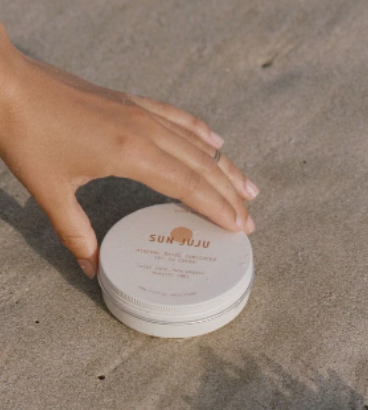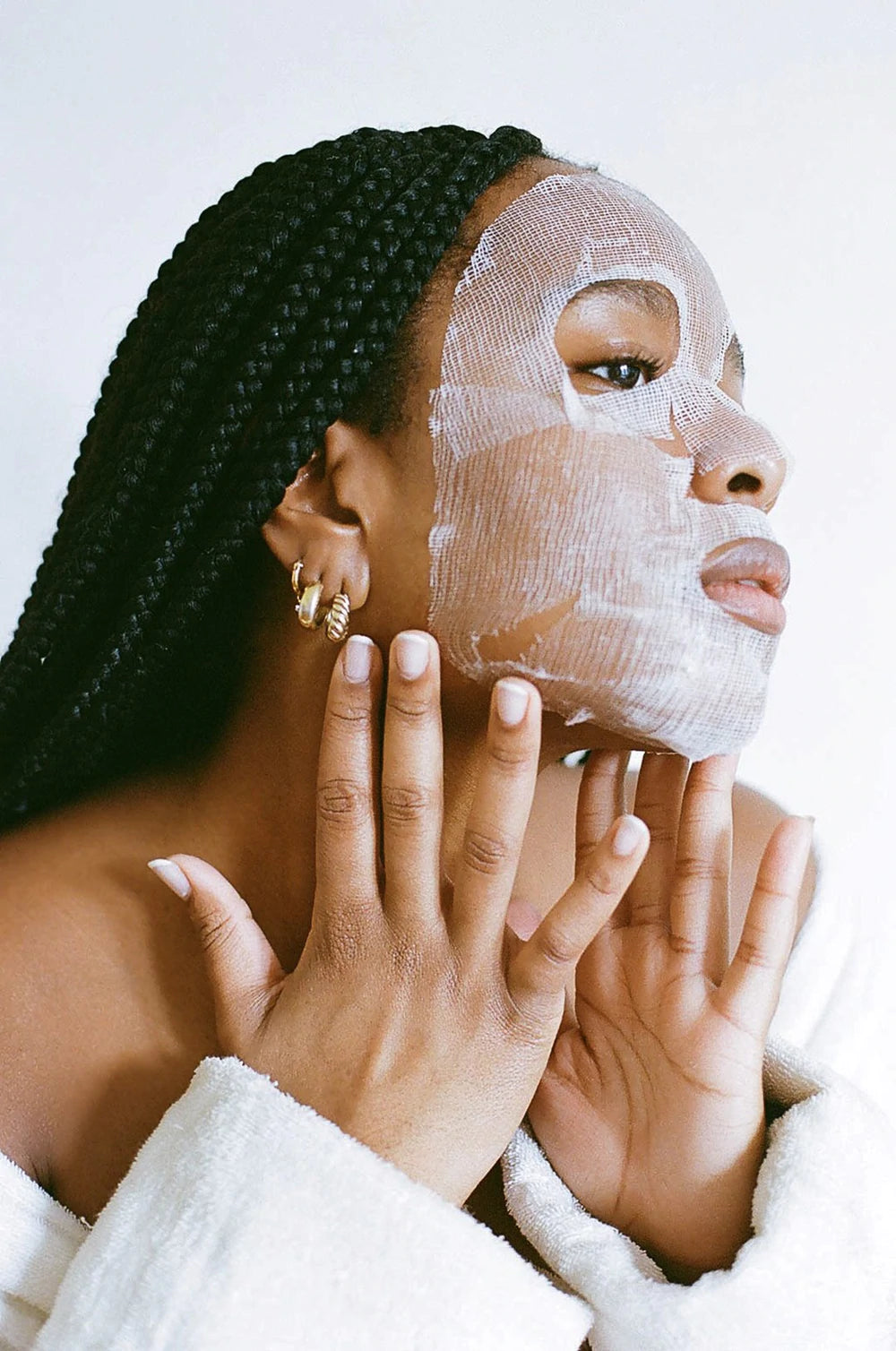
Let's Talk: All about SPF
If you're not already wearing daily SPF and feel overwhelmed with the terminology on sunscreen tubes - you're not the only one.
We often get questions about the terms used when referring to sunscreen and what they actually mean as well as lots of you looking for guidance toward the best sunscreen.
Simply put, the best sunscreen is the one you want to reach for everyday. Some sunscreens may blend into your skin tone better, you may like the scent or texture some more than others, and so on.
There are lots of options so don't be put off if you haven't found your perfect SPF yet, we're here to guide you through!
___________________
SPF: Explained
SPF stands for Sun Protection Factor, and is how we measure the protection from the sun’s UVB rays. SPF 15 blocks 93% of UVB rays, SPF 30 blocks 97%, and SPF 50 blocks 98%. Experts recommend staying between 30 and 50 SPF — which offers sufficient protection, anything over SPF 50 offers marginally more protection (less than 1%).
There is often a false sense of security with higher numbers. You think since you’re wearing a higher level, you are invincible to the sun, and that’s just not the case. Most of us also forget that SPF is only at its most active for about two hours, so ideally you need to reapply it often.
In addition to sunscreen, is the holistic approach to staying safe in the sun which includes; wearing protective clothing (such as a wide-brimmed hat and sunglasses), seeking shade (especially between the hours of 10 a.m. and 4 p.m when the suns rays are strongest), and avoiding tanning beds which can cause long-term skin damage and raise the chances of skin cancer.
What is the difference between physical and mineral sunscreens?
There are two main types of sunscreen: physical (aka mineral) and chemical. Both absorb the sun’s UV rays to help prevent skin damage, but physical also reflects some UV rays. Neither is “better” than the other, they simply use different active ingredients. Chemical SPF typically uses actives like avobenzone and homosalate, whereas physical SPF will contain zinc oxide and/or titanium dioxide which creates a barrier to the suns rays.
What is the difference between UVA + UVB rays?
The simple way to distinguish the two is UVA(ging) and UVB(urning). Both rays have overlapping effects (i.e. both can cause burns and premature aging), but UVA rays are mostly responsible for fine lines, sun spots and breaking down collagen, while UVB rays play the most significant role producing skin cancers and sunburns.
Does everyone need to be wearing sunscreen?
The short answer is, yes. Although darker skin tones are less susceptible to burns, it is still important to protect against sun damage such wrinkles and skin cancer. Generally, you'll need about a half-teaspoon of sunscreen for your face (or two fingers length long) and an ounce (a shot glass full) for body but don't be scared to apply more (less is not more when it's comes to SPF). Sunscreens will naturally break down over time so it is important to re-apply every couple of hours or more frequently if you're sweating or swimming as these types of activities will break down the sunscreen faster.
How long will SPF remain effective when stored?
Most sunscreens have expiration dates on their bottles, but if they don’t, we recommend writing the date of purchase right on the bottle. To optimize performance, be sure to store SPF in cool places where the bottle is not exposed to sunlight for prolonged periods of time.
It is normal for some natural separation to occur over time if stored for a while before use. If you're unsure, refer back to the expiry date and the time of your purchase to know when it will likely cease to be effective.
Now that we've covered the basics, we're going to breakdown some commonly used terms that are attached to the sunscreens we buy.
Broad Spectrum
Refers to sunscreens that provide protection from both UVA(ging) + UVB(urning) rays. This is the best type of protection you can give your skin.
Free Radicals
Free radicals are unstable atoms that can damage cells, causing illness and aging. In relation to SPF, it is known that UV induced skin damage and oxidative stress are associated with free radicals, from which sunscreens are expected to offer significant protection.
HEV Protection
The blue/violet band of the suns visible spectrum of light has a particularly high energy level and is known as High Energy Visible Light. This is often abbreviated to HEV Light or HEVL.
Whilst research is still limited, studies are showing that this light which is omitted from the sun but also through our electronic devices is damaging the deeper layers of the skin causing collagen to break down and contributing to hyperpigmentation and aging of the skin.
Most broad-spectrum sunscreens should help to protect against HEV skin damage but some additional ingredients such as Ginseng or Iron Oxide may boost protection.
Non-Comedogenic
Noncomedogenic, as it relates to sunscreen, has ingredients that are less likely to cause breakouts by clogging your skin pores. Best for blemish-prone skin, Look for ingredients like zinc and titanium dioxide.
Non-Nano Zinc Oxide
Non-nano essentially means a particle so small that it cannot enter your bloodstream, which is considered "safer" however, it is important to remember that Zinc Oxide itself is considered a completely safe ingredient by Health Canada.
Reef Safe/ Reef Friendly
Any sunscreen with this term on its packaging should be free from any of these five ingredients: oxybenzone, octinoxate, octocrylene, 4-methylbenzylidene, and butyl-paraben. Some studies suggest that these ingredients can affect coral's ability to reproduce by harming or killing coral larvae and even reduce its life span and immunity. However, this is an unregulated term so always be sure to check the label for the above ingredients if being reef-safe is important to you!
Water resistant
Sunscreens that advertise this ability have to pass intense water emergence testing prior to their SPF testing, to trust that these products will be effective under water. The key thing to remember here is to reapply after you get out of the water. Many brands say protection lasts for 80 minutes, but at a minimum, re-apply every hour. Again, less is not more when it comes to sunscreen.
SPF at the Shoppe
Best for Poolside: Salt & Stone Water Resistant Natural Mineral Sunscreen SPF 30
This lightweight, non-greasy formula sinks into skin quickly and protects with SPF 30 along with Hyaluronic Acid and Rosehip to soothe and moisturize skin.
Be sure to lather up pre and post-swim and re-apply every two hours!

Best Face Sunscreen: Dr. Loretta Universal Glow Daily Defence - Mineral SPF 40
With a light tint that counteracts a white cast, the Dr. Loretta Universal Glow Daily Defence SPF 40 protects against the the four main external factors that contribute to skin aging (pollution, light, climate and irritants) boosted with powerful antioxidant Lipochroman to work alongside Zinc Oxide to prevent aging as well as protecting you from the suns rays.
Best for All-Over Hydration: Sun Juju Hydrating SPF 50
East to blend, hydrating, plant based and reef safe all wrapped up in a fully re-usable tin to limit packaging! For use on face + body. this is one to throw in your bag for a day at the beach.
Suitable for acne-prone and sensitive skin. Kakadu Plum (nature's highest source of vitamin c) shields your skin from UV free radicals and promotes collagen production for dewy, healthy skin.

Easiest to Re-Apply: Salt & Stone Tinted Sunscreen Stick - SPF 50
A natural, mineral based, reef-safe SPF stick with a matte finish that can be brought along anywhere you go and quickly re-applied for maximum protection.
Very slightly tinted, blending into almost all skin tones with no white cast.

Best for a Glowy, Even Skin Tone: Cle Cosmetic CCC Cream SPF 50



__________________
We hope the biggest takeaway from this blog post is the importance of daily SPF and finding one that works for you so that you can enjoy all the wonderful benefits of the sun, safely!


